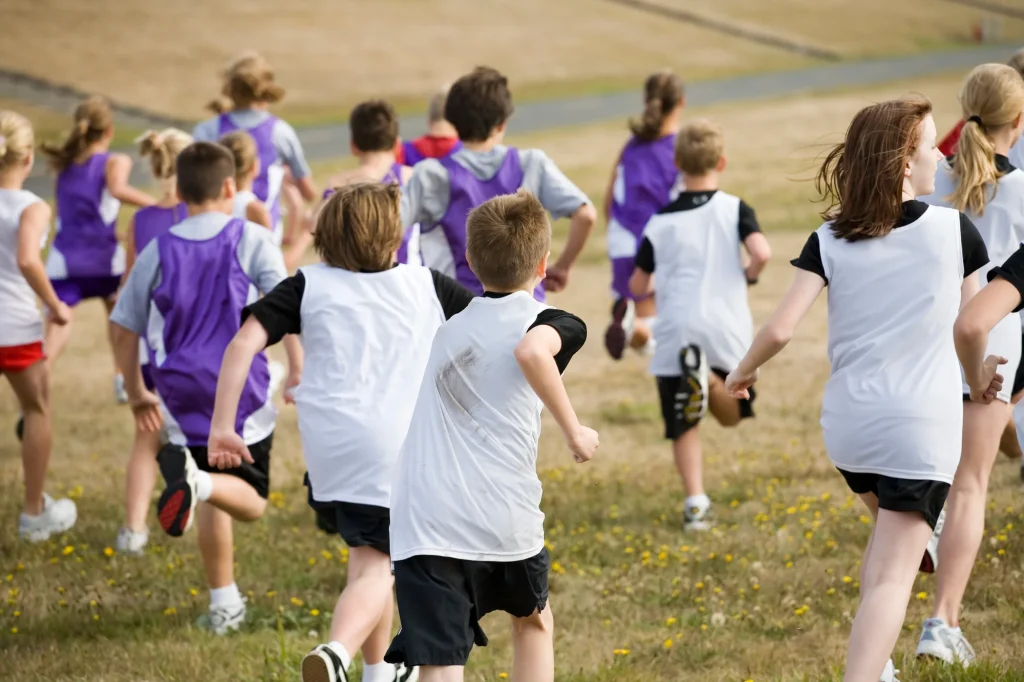Choosing the right sports equipment for kids and young athletes is essential for both safety and development. Whether your child is just starting out or is more advanced in their sports journey, having the right gear can make a significant difference in their comfort, performance, and overall enjoyment. Here’s what to look for when selecting equipment for young athletes:
1. Safety Comes First
First and foremost, ensure that the equipment you choose provides the highest level of protection. This means investing in age-appropriate helmets, knee and elbow pads, and protective gear tailored to the specific sport your child is playing. For example, youth soccer players should wear shin guards that fit snugly and are made from durable materials, while young hockey players need helmets with proper face protection.
2. Size and Fit
Kids grow quickly, so always choose equipment that fits well but isn’t too tight or restrictive. Look for adjustable options such as cleats with a customizable fit, baseball gloves that expand as the child’s hand grows, and backpacks designed to accommodate changing sizes. Ill-fitting gear can cause discomfort and hinder athletic performance.
3. Lightweight and Easy to Use

For young athletes, equipment should be lightweight and easy to use to help them develop skills without feeling fatigued. Lightweight tennis rackets, small-sized basketballs, or soft foam soccer balls are great choices that make learning and practice more fun and less strenuous.
4. Kid-Friendly Design and Comfort
Kids appreciate gear that matches their personality. Sports equipment in bright colors, fun designs, or featuring their favorite characters can make them more excited to participate in physical activity. However, it’s important to balance style with comfort and practicality.
5. Durable Materials
Children are often hard on their gear, so choose sports equipment made from durable, high-quality materials that can withstand repeated use. Materials that are water-resistant, shatterproof, or reinforced are ideal for keeping up with their active lifestyles.
6. Versatile Equipment
For young athletes who play multiple sports, opt for gear that is versatile and adjustable, such as multi-sport shoes or a backpack with separate compartments to store different pieces of equipment.
Ensuring that young athletes have the right equipment is crucial not just for performance, but for developing a lifelong love for sports and physical activity. Whether they are playing in a school league or just having fun with friends, the right sports gear can make a difference in their comfort, safety, and motivation. Here’s a deeper look at essential considerations when picking the best sports equipment for kids:

1. Prioritizing Safety
Safety should always be the top priority when selecting sports equipment for children. Proper protection gear helps reduce the risk of injuries and allows kids to play more confidently. For example, in contact sports like football or hockey, helmets should fit securely and come with face shields or cages for added protection. For non-contact sports, such as soccer or basketball, consider knee and elbow pads that are made of lightweight but durable materials. When shopping for protective gear, check for certifications that indicate the equipment meets safety standards for youth sports.
2. Selecting the Right Size and Fit
Children grow quickly, so it’s important to ensure that their sports gear fits properly and provides adequate support. This is especially true for shoes, as improper footwear can lead to discomfort and even injury. Shoes designed for sports like soccer, tennis, or running should have a snug but flexible fit that allows for natural movement while providing the necessary arch support. In the case of items like baseball gloves or hockey pads, choose sizes that fit well and are adjustable for growth spurts. It’s wise to periodically check that the equipment still fits well to maintain both comfort and safety.
3. Lightweight and Easy to Handle
Young athletes need gear that is easy to manage, especially when they are just starting out. Equipment that’s too heavy or difficult to handle can lead to frustration and may even hinder skill development. For instance, a lightweight baseball bat or tennis racket allows children to develop their swing and technique without straining their muscles. Similarly, soft soccer balls or foam basketballs can help beginners learn the basics of dribbling and passing without worrying about the ball being too fast or heavy.
4. Comfort and Breathability
Kids are more likely to enjoy sports when they are comfortable. Choosing gear made from breathable materials can make a big difference, especially during longer play sessions. For example, moisture-wicking socks and breathable cleats will keep feet dry and reduce the risk of blisters and discomfort. In addition, padded jerseys, shorts, or sweatpants can provide extra comfort and reduce chafing. When it comes to helmets and pads, look for options with built-in ventilation that allow air to circulate and keep kids cool, particularly during warm weather.
5. Encouraging Individuality and Fun
Children are more motivated to participate in sports when they find the gear appealing. Choosing sports equipment in colors or designs that they love—such as their favorite team colors or characters—can make all the difference in getting them excited to play. Youth sports gear now comes in a variety of fun, engaging styles that can appeal to children’s personalities while still maintaining the necessary functionality and safety.
6. Durable Materials for Longevity
Young athletes can be tough on their equipment, so choosing durable gear that can withstand repeated use is essential. For example, baseball gloves made from high-quality leather are more likely to last longer compared to synthetic options. Look for backpacks and sports bags with reinforced seams and water-resistant materials to protect items like uniforms, shoes, and personal belongings. When choosing protective gear such as knee pads or helmets, make sure they are built to endure rough use and exposure to different weather conditions.
7. Versatility for Multi-Sport Athletes
For children who participate in multiple sports, it’s important to choose gear that is adaptable and versatile. Multi-sport shoes are a great example, as they provide support and comfort for various activities, from soccer and basketball to running and casual training. A well-designed sports bag with separate compartments can also help store different items and keep everything organized. This is especially useful for busy kids who might have practices or games for different sports on the same day.
8. Accessories to Complete the Gear
Sometimes, it’s the small things that make a big difference. Accessories like wristbands, sweatbands, and custom mouthguards can enhance performance and comfort. For example, moisture-wicking wristbands can help keep sweat out of young athletes’ eyes, while custom-fit mouthguards offer protection during contact sports. Choosing durable water bottles that are easy to use can help kids stay hydrated during games and practice.
Conclusion
Selecting the right sports equipment for kids and young athletes requires thoughtful consideration of factors like safety, comfort, durability, and individual preferences. From properly fitting helmets and protective gear to lightweight and breathable apparel, the right equipment sets young athletes up for a positive and enjoyable experience. Investing in quality sports gear not only promotes good physical health but also fosters confidence and enthusiasm, helping kids build lifelong skills and a love for sports.
Choosing the right sports equipment for kids and young athletes requires balancing safety, comfort, and functionality. From durable materials to kid-friendly designs, investing in quality sports gear will not only enhance your child’s performance but also ensure they enjoy and stay engaged in their chosen activities.


